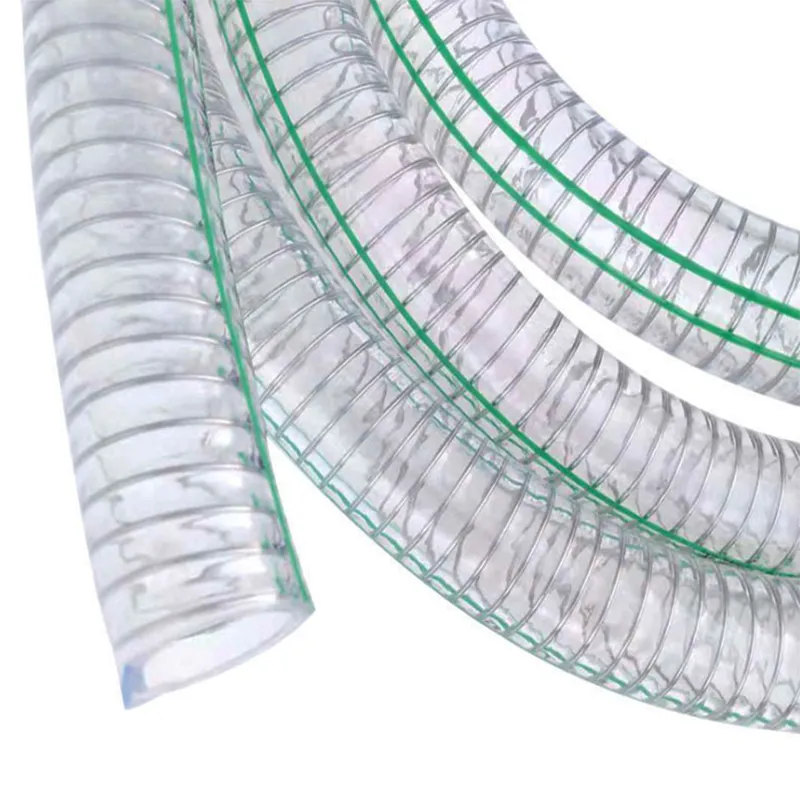Exploring the Versatility and Applications of Layflat Hoses in Various Industries
Understanding Layflat Hoses A Comprehensive Overview
Layflat hoses are a crucial component in various industries, serving as an efficient means of transporting fluids. Their design and functionality make them an attractive choice for many applications, from irrigation to firefighting. This article delves into the characteristics, benefits, and applications of layflat hoses, shedding light on their significance in today’s industrial landscape.
What Are Layflat Hoses?
Layflat hoses are typically made from durable materials like PVC or polyurethane, designed to lay flat when not in use. This flat design not only saves space but also makes them easy to handle and store. Unlike conventional hoses, layflat hoses can be rolled and transported easily, which is especially beneficial in environments where mobility is key.
Benefits of Layflat Hoses
1. Space-Saving One of the primary advantages of layflat hoses is their ability to compactly store. Their flat profile allows for efficient storage, particularly in scenarios where space is at a premium. This feature is particularly useful for agricultural operations that require multiple hoses to be stored during the off-season.
2. Lightweight and Portable Layflat hoses are generally lighter than traditional hoses, making them easier to transport. This is important for industries that require hose deployment over large areas, such as fire services or flood management teams.
3. Versatility Layflat hoses can be used for various applications. They are commonly utilized in agriculture for irrigation, in construction for water transfer, and in firefighting for quick response to emergencies. Their versatility makes them a preferred choice across numerous sectors.
4. Resistance to Damage Many layflat hoses are designed to withstand harsh conditions, including extreme temperatures and chemical exposure. This resilience increases their lifespan and reduces the likelihood of replacements, saving money over time.
layflat hoses

5. Easy Handling The flat design also aids in easy deployment and retrieval. Layflat hoses can be quickly laid out when needed and just as easily rolled back up after use, streamlining processes in demanding environments.
Applications of Layflat Hoses
- Agricultural Irrigation Farmers commonly use layflat hoses for irrigation systems, allowing water to be delivered efficiently across large fields. Their ability to connect to various pump systems makes them a versatile tool in modern agriculture.
- Firefighting Fire departments rely on layflat hoses due to their lightweight nature and ease of transport. They can be quickly deployed to deliver water from a nearby source to fight fires in difficult terrains.
- Waste Management In waste management, layflat hoses can facilitate the transfer of liquids like sewage or wastewater. Their durability ensures safe transport under challenging conditions.
- Construction Sites For construction projects, layflat hoses can be used for dust control and water transfer, ensuring site safety and compliance with regulations.
Conclusion
Layflat hoses are an indispensable tool across numerous industries, providing an efficient, portable, and versatile solution for fluid transportation. Their space-saving design, combined with durability and ease of handling, makes them an optimal choice for a wide range of applications. As industries continue to evolve and require more adaptable systems, layflat hoses will undoubtedly remain a vital component in fluid management strategies worldwide.
-
Top Quality Oxy Acetylene Hoses for Sale Fit for Welding DemandsNewsJul.28,2025
-
The Future of Pneumatic Air Tubes in IndustryNewsJul.28,2025
-
Superior and Reliable LPG Hose Pipe Solutions for Every NeedNewsJul.28,2025
-
Exceptionally Durable and Versatile Premium Braided PVC TubingNewsJul.28,2025
-
Best Adapters for Connecting Garden Hose to PVC Pipe ConnectionsNewsJul.28,2025
-
The Essential Role of LPG Hoses in Safe and Efficient Gas DistributionNewsJul.16,2025














